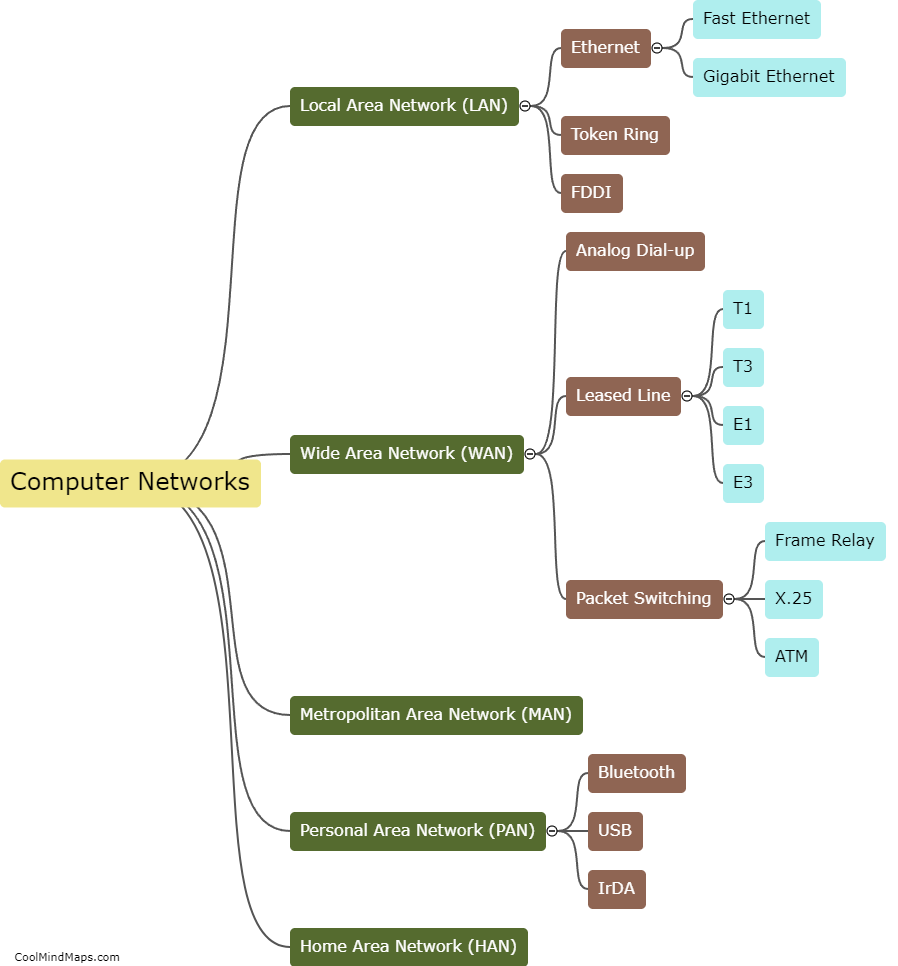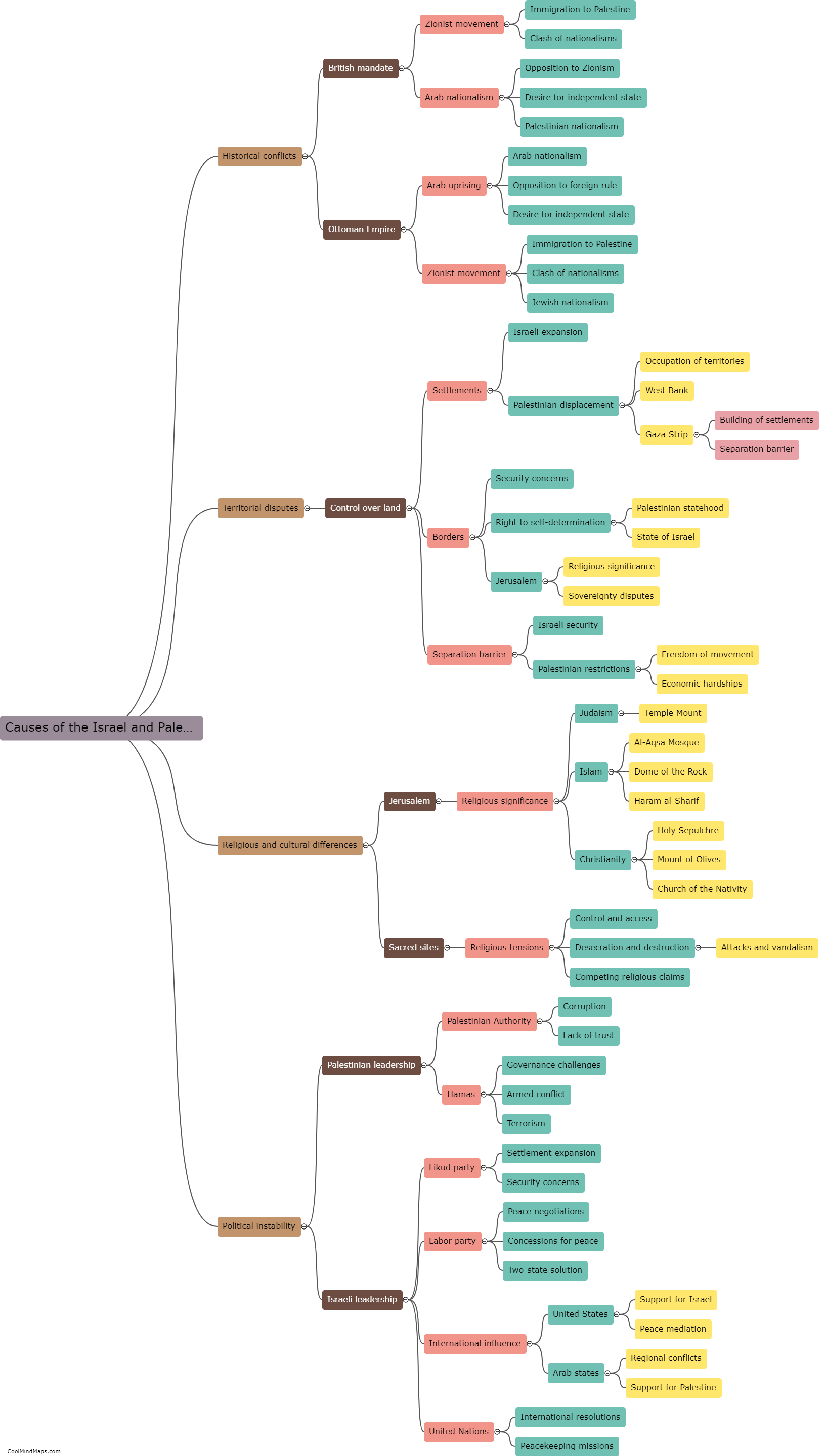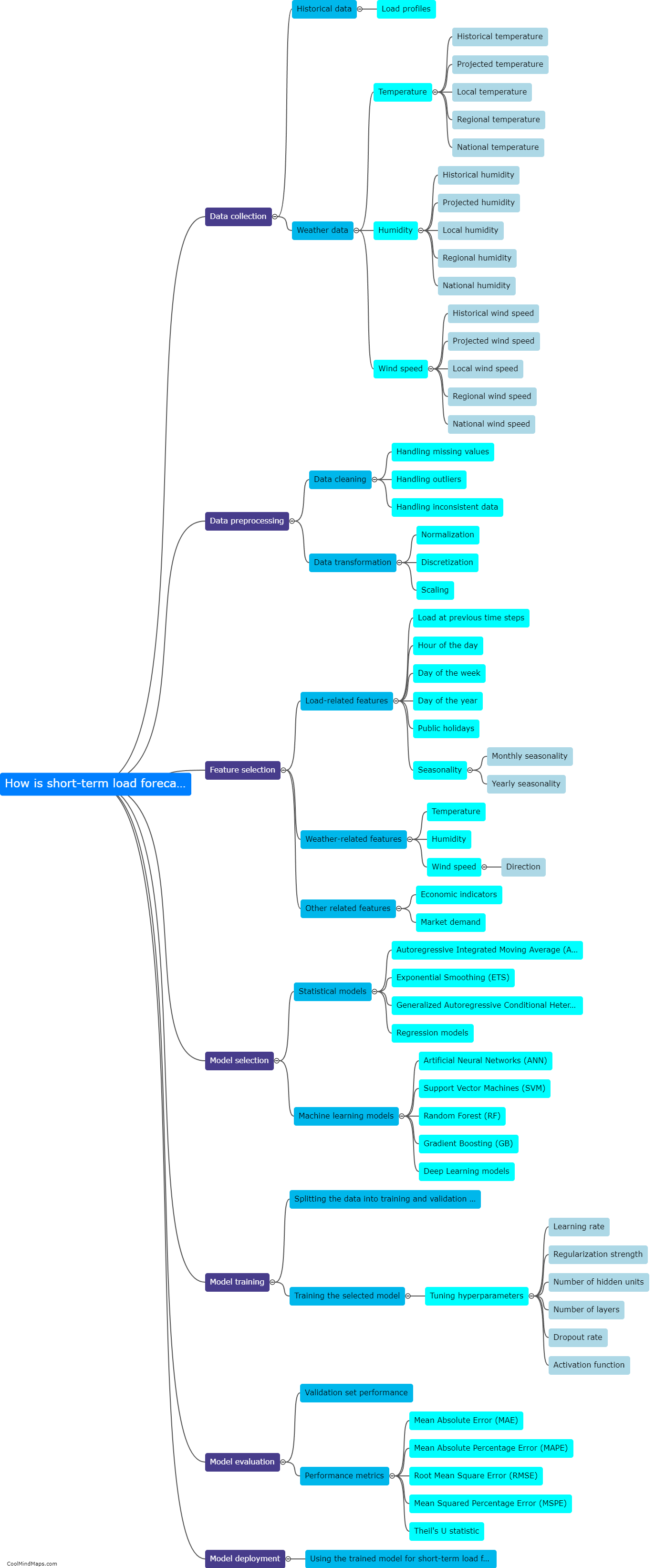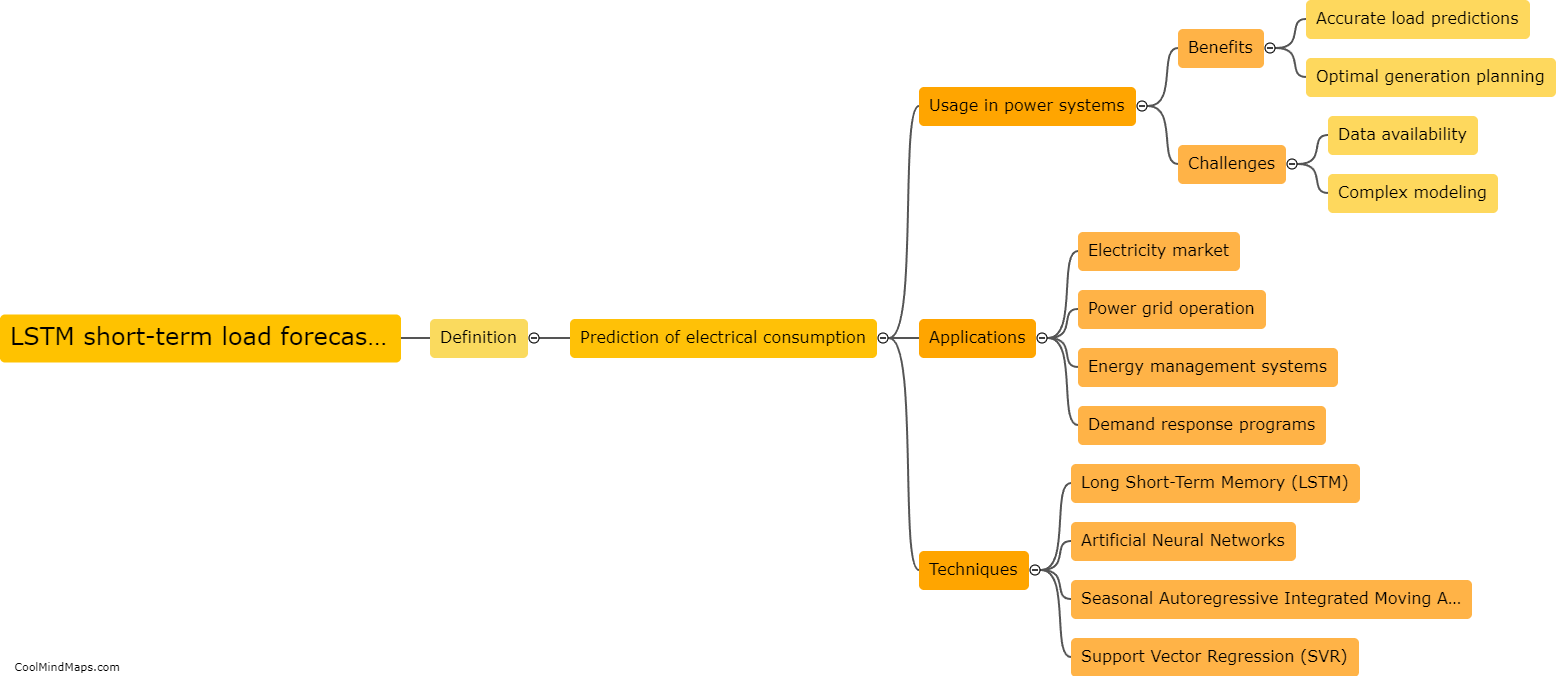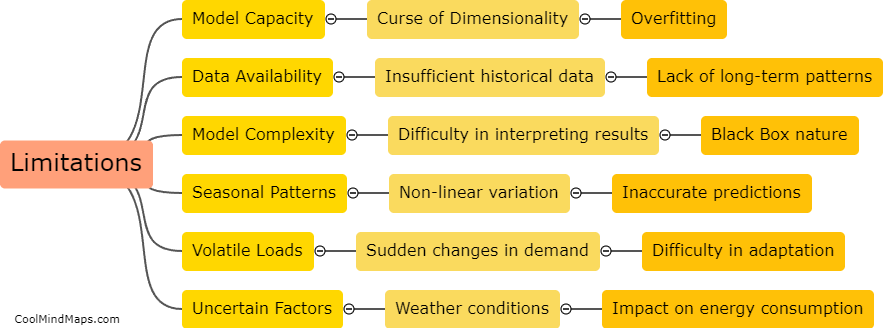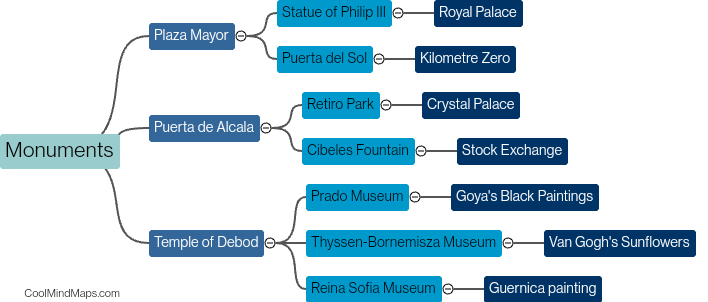How does LSTM architecture work in load forecasting?
LSTM (Long Short-Term Memory) architecture plays a significant role in load forecasting by capturing and processing temporal dependencies in time series data. Load forecasting refers to predicting the future demand for electricity, and LSTM models have proven to be effective in this task. The LSTM architecture incorporates memory cells that can retain information over long periods, allowing the model to capture patterns in load data, such as daily, weekly, or seasonal variations. Unlike traditional machine learning models, LSTMs can handle data with varying time lags and overcome the vanishing gradient problem that can occur in deep neural networks. By learning from historical load data, the LSTM architecture can accurately forecast future electricity demand, aiding in optimal energy management and decision-making in various industries.

This mind map was published on 17 October 2023 and has been viewed 118 times.
